Discover 11 hidden attractions, cool sights, and unusual things to do in Windhoek (Namibia). Don't miss out on these must-see attractions: Independence Memorial Museum, Alte Feste, and Parliament Gardens. Also, be sure to include Heroes' Acre in your itinerary.
Below, you can find the list of the most amazing places you should visit in Windhoek (Khomas).
Table of Contents
Independence Memorial Museum
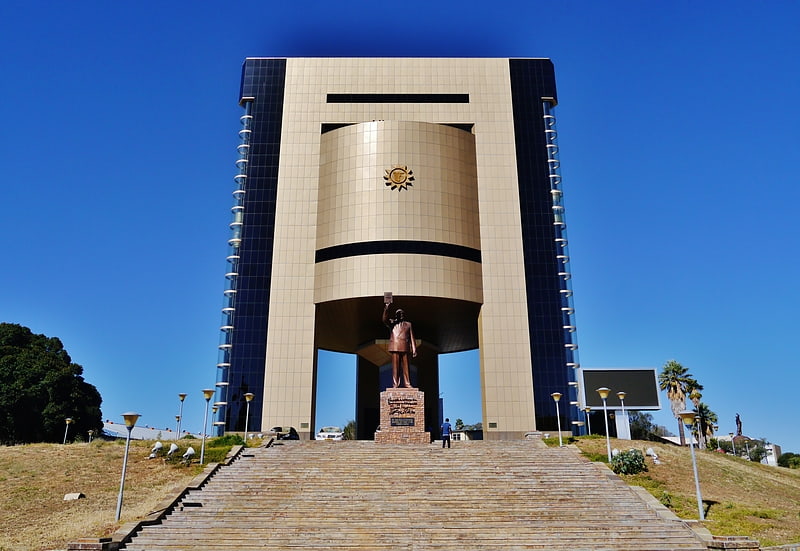
Museum in Windhoek, Namibia. The Independence Memorial Museum is a historical museum in Windhoek, the capital of Namibia. It focuses on the anti-colonial resistance and the national liberation movement of Namibia. The museum is located on Robert Mugabe Avenue and was designed and built by Mansudae Overseas Projects, a North Korean firm. The museum was inaugurated on March 21, 2014, the twenty-fourth anniversary of independence of the country, by President Hifikepunye Pohamba. It is flanked by two statues: the Sam Nujoma Statue and the Genocide Statue, also built by Mansudae. The Sam Nujoma Statue sits on the site of the German-era Reiterdenkmal equestrian statue.[1]
Address: Robert Mugabe Avenue, Windhoek
Alte Feste
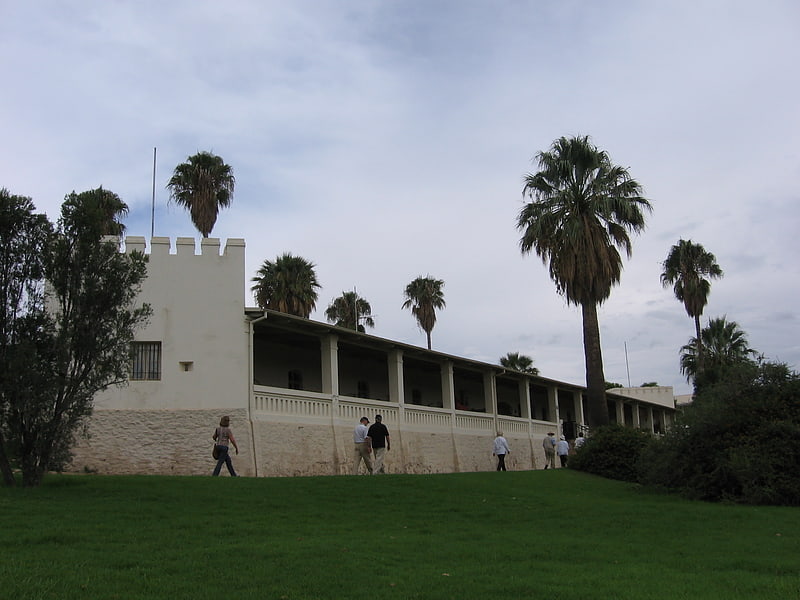
Museum in Windhoek, Namibia. The Alte Feste is a fortress and museum in downtown Windhoek, the capital of Namibia.
The building was designed by captain Curt von François to serve as headquarters of the imperial German Schutztruppe (colonial military force) during German colonization of South West Africa. The location of Windhoek, which was deserted and completely destroyed at that time, was chosen because the Germans felt it would serve as a buffer zone between the Nama and Herero tribes. The fort was, however, never involved in any military action.
The foundation was laid on 18 October 1890 by then Schutztruppe private Gustav Tünschel. The building was redesigned multiple times during the first years; its final layout was only completed in 1915. It consists of an inner courtyard with high walls and accommodation for the troops on the inside, as well as four towers. Alte Feste is the oldest surviving building in the city which subsequently developed around it.
After the World War I German surrender in South West Africa Windhoek was occupied by the South African Army in March 1915. Alte Feste now served as military headquarters for the South African Union troops.
In 1935 the fort was used for a more peaceful purpose when it was converted into a hostel for the adjacent Windhoek High School. Already severely dilapidated, it was declared a National Monument in 1957. The building was renovated extensively in 1963, and since then accommodates the National Museum of Namibia.
In 2010, the Reiterdenkmal, Windhoek's well-known equestrian monument, was placed in front of Alte Feste. It was removed and placed in storage on Christmas Day in 2013.[2]
Parliament Gardens
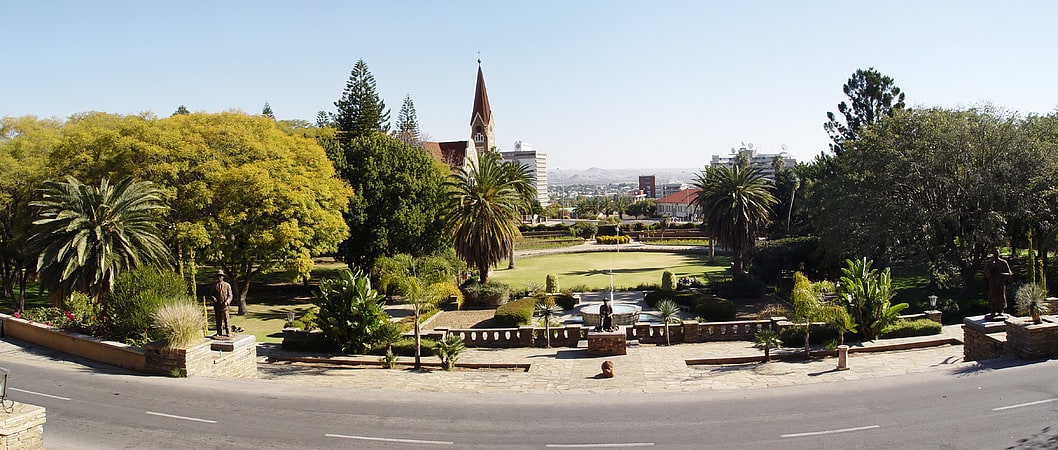
Park in Windhoek, Namibia. Parliament Gardens is a small park in downtown Windhoek, Namibia. It is located between the Tintenpalast and the Christuskirche. It was laid out in 1932 and was originally called the Tintenpalast gardens, adopting its present name after Namibian independence in 1990.
Parliament Gardens contains Namibia's first post-independence monument: a bronze-cast statue of the Herero chief Hosea Kutako. Two other Namibian nationalists are also honoured with bronze statues in the gardens: Hendrik Samuel Witbooi and Theophilus Hamutumbangela. The three statues flank the steps up to parliament's main entrance.
The gardens used to be an olive plantation, and still include an olive grove. They also contain a bowling green lined with bougainvilleas along with a thatched-roof clubhouse. Twice a month the gardens host "Theatre in the Park", run by the College of the Arts.
In 2016, the opening of the Namibian Parliament was held in the Parliament Gardens because of limited space in the Tintenpalast. Due to a change to the Constitution in 2014, the number of parliamentarians had increased significantly, and so joint sittings have to be held elsewhere.
Rough Guides describes Parliament Gardens as "delightful, shady.. definitely merit a stroll". The gardens are "particularly popular at lunchtimes and weekends, when students laze on the lawns poring over their books or each other." They are also a "popular place for a lunchtime picnic."[3]
Heroes' Acre
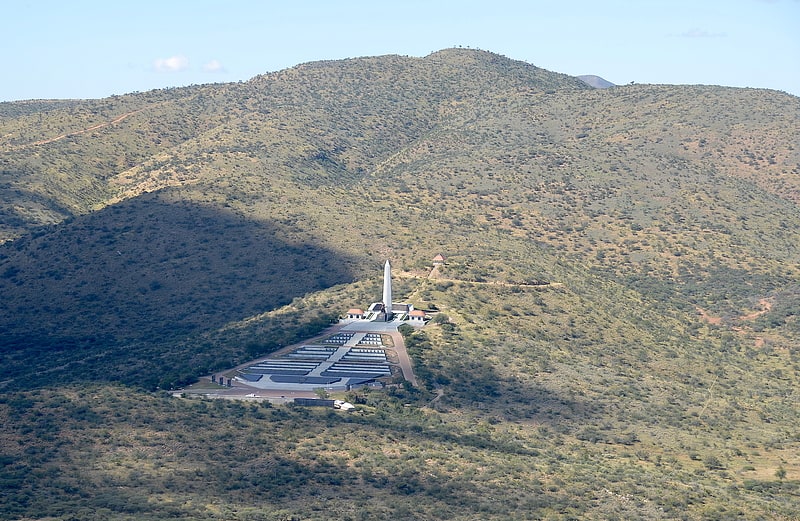
Monument in Namibia. The Heroes' Acre is an official war memorial of the Republic of Namibia. Built into the uninhabited hills 10 kilometres south of the city centre of Windhoek, Heroes' Acre opened on 26 August 2002. It was created to "foster a spirit of patriotism and nationalism, and to pass to the future generations of Namibia".[4]
Reiterdenkmal
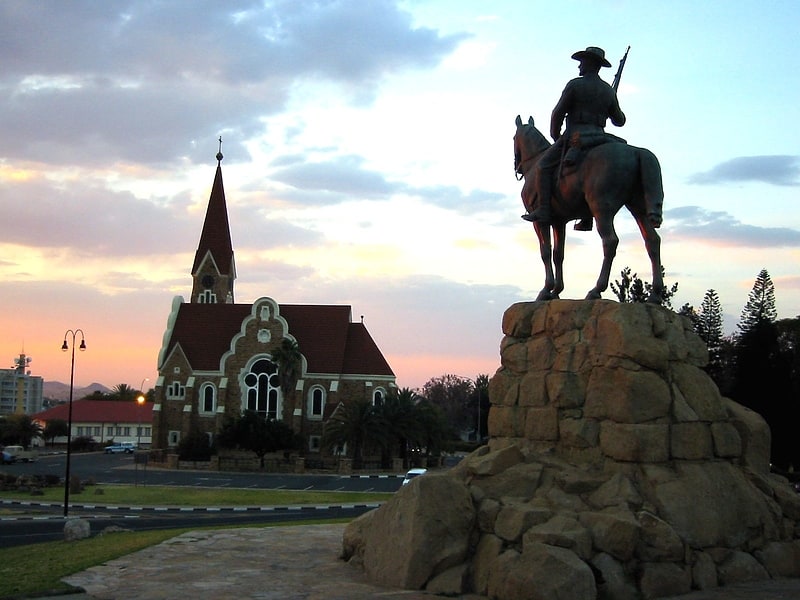
Monument in Windhoek, Namibia. The Equestrian Monument, more commonly known under its German original name Reiterdenkmal and the name Südwester Reiter, was a monument in Windhoek, the capital of Namibia. It was inaugurated on 27 January 1912, the birthday of German emperor Wilhelm II. The monument honoured the soldiers and civilians that died on the German side of the Herero and Namaqua War of 1904–1907, a situation that caused controversy about its role in a democratic Namibia that has shed its colonial occupation and gained independence.
The monument was unmounted in 2009 at its original location opposite the Christuskirche in central Windhoek, and in 2010 re-erected a few metres away in front of the Alte Feste. After public controversy did not cease it was removed altogether in 2013. The bronze statue is currently in storage in the courtyard of the Alte Feste.[5]
St. Mary's Cathedral
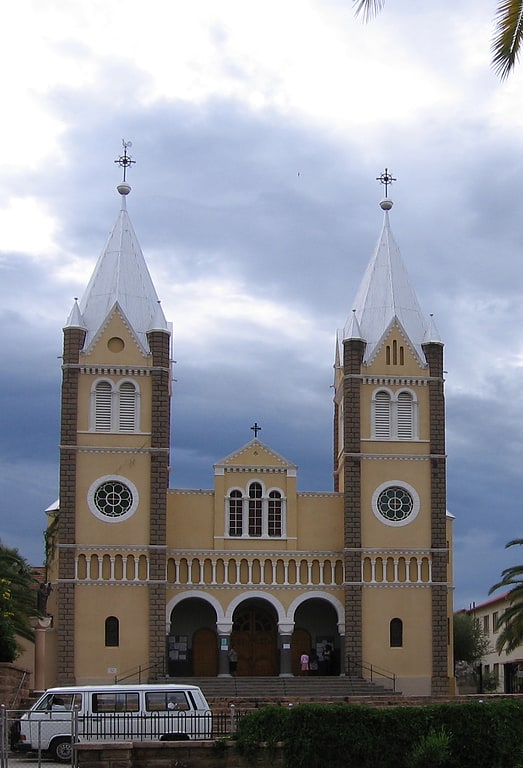
Catholic cathedral in Windhoek, Namibia. St. Mary's Cathedral, known as St. Marien Kathedrale in German, is a Roman Catholic church in Windhoek, Namibia. It is the seat of the Archdiocese of Windhoek. It is in the Karl-Werner street in the center of Windhoek and offers religious services every day except Monday night. It was built between 1906 and 1908 from local materials and elements of brick Romanesque revival style.
The facade features a porch preceded by three semicircular arches topped by an arch and a triple. It is flanked by two quadrangular twin towers rising on four levels and crowned by arrows painted white.[6]
Heinitzburg
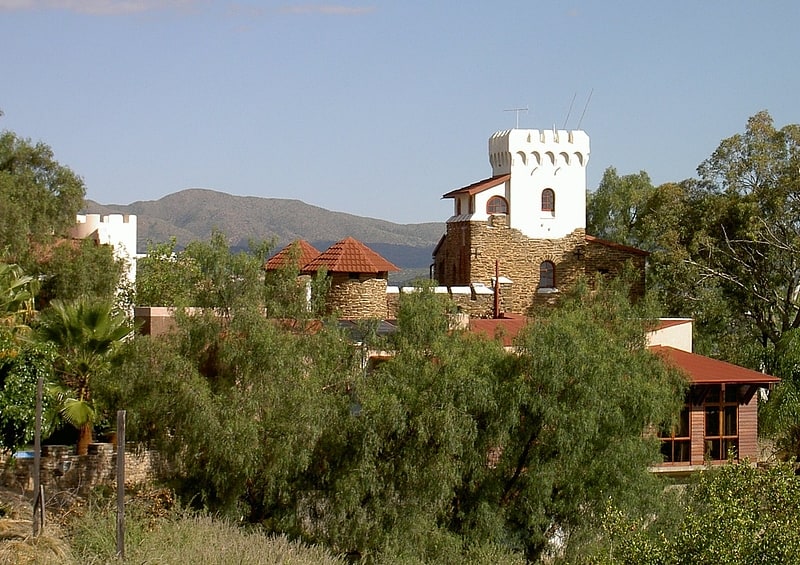
Hotel in Windhoek, Namibia. Heinitzburg is one of the three castles in Windhoek, Namibia. It was built in 1914 by architect Wilhelm Sander.
Sander originally built the castle for himself but sold it in 1916 to Hans Bogislav Graf von Schwerin, who named the castle Heynitzburg after his wife Margarete's birth name "von Heynitz".
Heinitzburg is used today as a restaurant and hotel. The hotel is a member of the Relais & Chateaux group, a global consortium of individually owned and operated luxury hotels.[7]
Address: 22 Heinitzburgstreet, Windhoek
Schwerinsburg

Large castle built in the 1890s. Schwerinsburg is the biggest of three castles in Windhoek, Namibia. Today it is the private residence of the Italian ambassador in Namibia.[8]
Christ Church
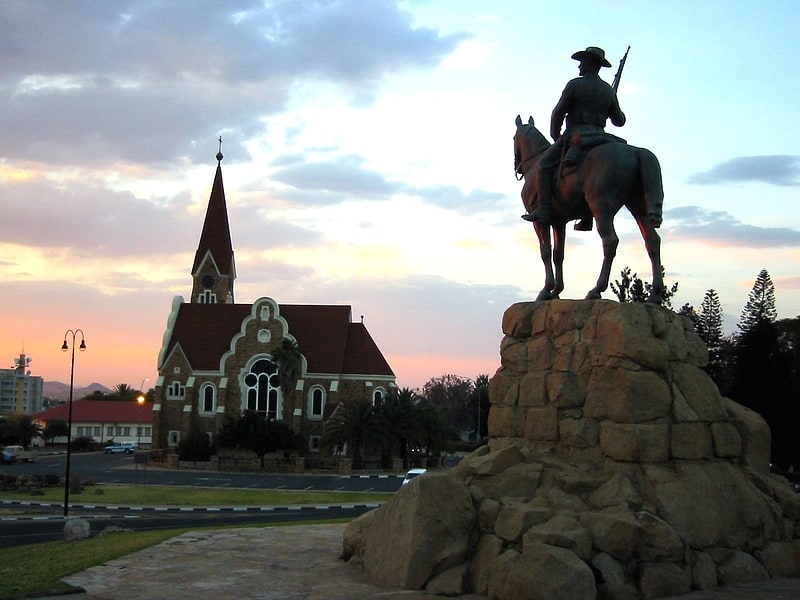
Landmark church built in the early 1900s. The Christ Church is a historic landmark and Lutheran church in Windhoek, Namibia, belonging to the German-speaking Evangelical Lutheran Church in Namibia. It was designed by architect Gottlieb Redecker.
The church was built following the wars between the Germans and the Khoikhoi, Herero, and Owambo. The foundation stone was laid on 11 August 1907, while on 16 October 1910 the church was officially dedicated. It was originally known as the Church of Peace.
Christ Church was constructed from quartz sandstone mined from the vicinity of Avis Dam. It has a mixture of neo-Romanesque, Art Nouveau and Gothic revival influences. Its spire is 24 m (79 ft) high.
The portico was made from Carrara marble imported from Italy. The clock and part of the roof was shipped from Germany, as were the three bronze bells cast by Franz Schilling. They bear the inscriptions "Ehre sei Gott in der Höhe" (Glory to God in the highest), "Friede auf Erden" (Peace on earth), and "Den Menschen ein Wohlgefallen" (Goodwill towards men). During a confirmation service in the 1960 the clapper of the main bell came loose, smashed through the window and fell on the street. Window bars were installed in reaction to this.
The colorful stained lead glass windows in the sanctuary were a gift from Emperor Wilhelm II. In the late 1990s a tourist noticed that all of them were installed with the sun protection on the inside. In the two years following this discovery, all window elements were restored and turned around.
The church is located on a traffic island on Robert Mugabe Avenue, opposite the Tintenpalast.[9]
Goreangab Dam
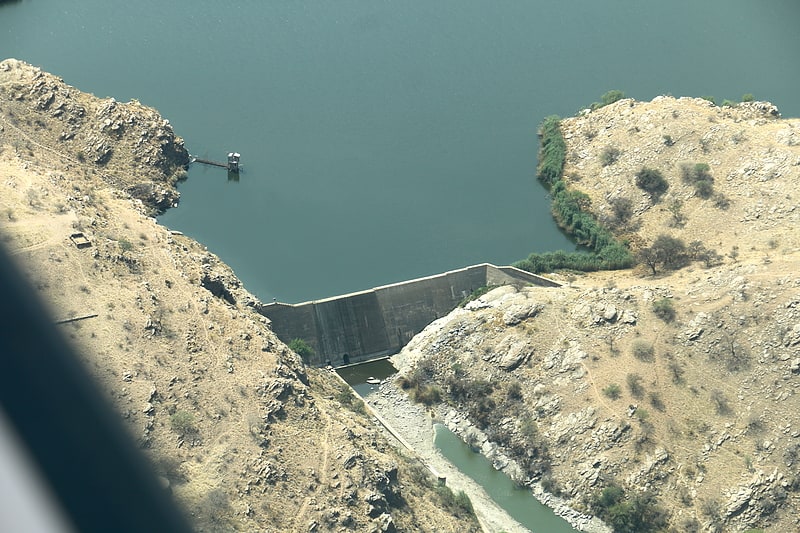
Dam in Namibia. Goreangab Dam is a dam in the north-western suburbs of Windhoek, the capital of Namibia. It dams the ephemeral Arebbusch River and its tributary, the Gammams River, which both run across Windhoek. The reservoir behind the dam has a capacity of 3.6 million cubic metres.[10]
Turnhalle

Historical landmark in Windhoek, Namibia. The Turnhalle is a building in Windhoek, the capital of Namibia. Built during the era of Imperial Germany's colonisation of South West Africa, it has been through a variety of uses, most prominently as the venue for the 1975–1977 Turnhalle Constitutional Conference, an attempt to quell armed resistance waged by the People's Liberation Army of Namibia against South African occupation. The Turnhalle housed the Tribunal court of the Southern African Development Community until disbandment in 2012.[11]